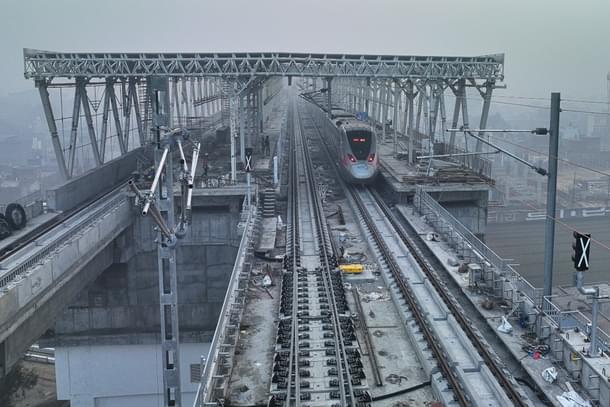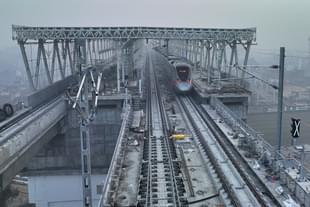Infrastructure
RRTS System Upgradation: Namo Bharat Service To Be Unavailable On 20 And 21 January
Arun Kumar Das
Jan 21, 2024, 12:17 AM | Updated 12:29 AM IST
Save & read from anywhere!
Bookmark stories for easy access on any device or the Swarajya app.


Namo Bharat train services on the 17-km-long priority section, between Sahibabad to Duhai Depot, will be unavailable for passenger operation for two days — on 20 and 21 January.
Currently, trial runs are being conducted on the section between Duhai to Meerut South Regional Rapid Transit System (RRTS) stations.
In the next two days, efforts will be focused on organising and facilitating the installation, upgradation of the signalling system, conducting extensive testing, and completing other related tasks required for operating on the forthcoming 25 km section beyond Duhai and Meerut South RRTS stations.
NCRTC has implemented European Train Control System (ETCS) Level 2 with critical interfaces like ETCS communication backbone over Long Term Evolution (LTE) for the first time in the world. To ensure passenger safety and seamless operations rigorous testing is required to be done.
During these two days, activities such as interface testing and the integration of the onboard signalling system with rolling stock will be conducted.
Additionally, the examination of new software for Interlocking, Radio Block Centre, LTE EPC (common for the entire corridor), and Ethernet Virtual Circuit will be carried out.
Regular train operations will recommence at their usual schedule following the completion of the signalling work starting from Monday (22 January) onwards. The suspension of operations on Saturday and Sunday is aimed at minimising the impact on commuters.
The 25 km stretch between Duhai and Meerut South RRTS station is the next segment of the RRTS corridor set to be operationalized for the public after the priority section. This section encompasses a total of four stations: Murad Nagar, Modi Nagar South, Modi Nagar North, and Meerut South.
The construction of the viaduct up to Meerut South has already been completed. Subsequently, various system works, including track laying, OHE installation, signalling and telecom, and electrical, have been advancing rapidly in this section.





